 W
WJean-Baptiste Belley was a native of Senegal and former slave from Saint-Domingue in the French West Indies who during the period of the French Revolution became a member of the National Convention and the Council of Five Hundred of France. He was also known as Mars.
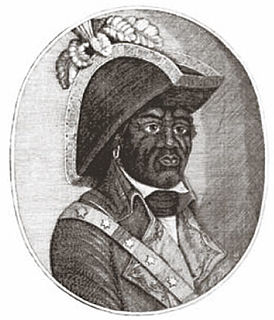 W
WGeorges Biassou was an early leader of the 1791 slave rising in Saint-Domingue that began the Haitian Revolution. With Jean François and Jeannot, he was prophesied by the vodou priest, Dutty Boukman, to lead the revolution.
 W
WJean Boudet was a French général de division of the French Revolutionary Wars and the Napoleonic Wars. The campaigns in which he was involved include the Saint-Domingue expedition. He was made a grand officer of the Légion d'honneur on 2 June 1809 and a knight of the Order of the Iron Crown, as well as a Comte de l'Empire in 1808. His name is engraved on the 16th column of the east side of the Arc de Triomphe in Paris.
 W
WJean-Pierre Boyer was one of the leaders of the Haitian Revolution, and President of Haiti from 1818 to 1843. He reunited the north and south of the country into the Republic of Haiti in 1820 and also annexed the newly independent Spanish Haiti, which brought all of Hispaniola under one Haitian government by 1822. Boyer managed to rule for the longest period of time of any of the revolutionary leaders of his generation.
 W
WFrançois Capois was a Haitian officer in the Haitian Revolution (1791–1794) for independence from France.
 W
WJean-Baptiste Chavannes was a Haitian abolitionist and soldier.
 W
WHenry Christophe was a key leader in the Haitian Revolution and the only monarch of the Kingdom of Haiti.
 W
WJean-Jacques Dessalines was a leader of the Haitian Revolution and the first ruler of an independent Haiti under the 1805 constitution. Under Dessalines, Haiti became the first country to permanently abolish slavery. Initially regarded as governor-general, Dessalines was later named Emperor of Haiti as Jacques I (1804–1806) by generals of the Haitian Revolution Army and ruled in that capacity until being assassinated in 1806. He is regarded as one of the founding fathers of Haiti.
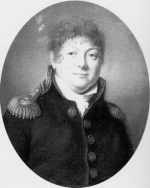 W
WJean Augustin Ernouf was a French general and colonial administrator of the Revolutionary and Napoleonic wars. He demonstrated moderate abilities as a combat commander; his real strength lay in his organizational and logistical talents. He held several posts as chief-of-staff and in military administration.
 W
WCécile Fatiman (1771-1883), was a Haitian vodou priestess, a mambo. She is famous for her participation in the vodou ceremony at Bois Caïman, which is considered to be one of the starting points of the Haitian Revolution.
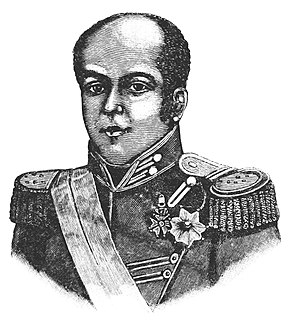 W
WEmperor Faustin-Élie Soulouque,Emperor of Hayti was a Haitian politician and military commander who served as President of Haiti from 1847 to 1849 and Emperor of Haiti from 1849 to 1859.
 W
WCatherine Flon, was a Haitian seamstress, patriot and national heroine. She is regarded as one of the symbols of the Haitian Revolution and independence. She is celebrated for sewing the first Haitian flag in 1803 and maintains an important place in Haitian memory of the Revolution to this day.
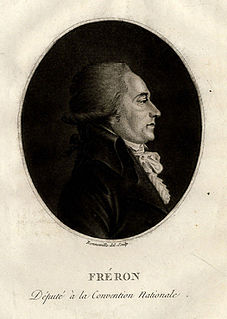 W
WLouis-Marie Stanislas Fréron was a French politician, journalist, representative to the National Assembly, and a representative on mission during the French Revolution.
 W
WCount Honoré Joseph Antoine Ganteaume was a French Navy officer and Vice-admiral.
 W
WJean-Jacques Louis Philippe Guerrier,Duke of L'Avance,Counte de Mirebalais(December 19, 1757 – April 15, 1845) was a career officer and general in the Haitian Army who became President of Haïti on May 3, 1844. He died in office on April 15, 1845.
 W
WGabriel-Marie-Théodore-Joseph, comte d'Hédouville was a French soldier and diplomat.
 W
WLouis-René Madelaine Le Vassor, comte de La Touche-Tréville was a French Vice-admiral. He fought in the American War of Independence and became a prominent figure of the French Revolutionary Wars and of the Napoleonic wars.
 W
WCharles Victoire Emmanuel Leclerc was a French Army general who served under Napoleon Bonaparte during the French Revolution. He was husband to Pauline Bonaparte, sister to Napoleon. In 1801, he was sent to Saint-Domingue (Haiti), where an expeditionary force under his command captured and deported the Haitian leader Toussaint L'Ouverture, as part of an unsuccessful attempt to reassert imperial control over the Saint-Domingue government. Leclerc died of yellow fever during the failed expedition.
 W
WFrançois Mackandal was a Haitian Maroon leader in Haiti. He is sometimes described as a Haitian vodou priest, or houngan. For joining Maroons to kill whites in Saint Domingue, he was captured and burned alive by French colonial authorities.
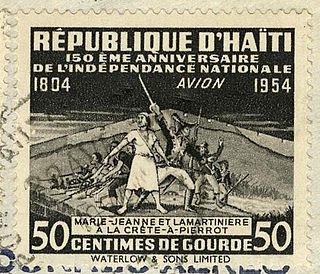 W
WMarie-Jeanne Lamartiniére, known in history only as Marie-Jeanne, was a Haitian soldier, woman of color, and reportedly a "dazzling beauty." She served in the Haitian army during the Haitian Revolution, which was a successful anti-slavery and anti-colonial insurrection by self-liberated slaves against French colonial rule. It took place 1791-1804.
 W
WIgnace Despontreaux Marion was a Haitian officer in the Haitian Revolution (1791–1794) for independence from France. On 1 January 1804, he was one of the signatories to the Act of Independence of Haiti.
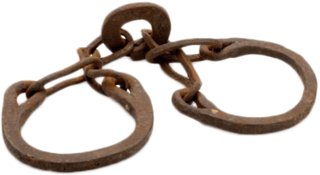 W
WVictoria "Abdaraya Toya" Montou was a Dahomey in the Benin tribe and freedom fighter in the army of Jean-Jacques Dessalines during the Haitian Revolution. She was reportedly Dessalines's aunt. Toya was a slave in Henry Duclos estate. Toya Montou was not the only woman to serve in the Haitian army during the revolution. While most of the names of the female soldiers are forgotten, exceptions are Marie-Jeanne Lamartiniére, who served at the Battle of Crête-à-Pierrot, that took place from 4 March until 24 March 1802, and Sanité Belair.
 W
WVincent Ogé was a French aristocrat of mixed descent who instigated a rebellion against white colonial authority in French Saint-Domingue that lasted from October to December 1790 in the area outside Cap-Français, the colony's main city. The Ogé revolt of 1790 foretold the massive slave uprising of August 1791 that eventually led to the Haitian Revolution.
 W
WAlexandre Sabès Pétion was the first President of the Republic of Haiti from 1807 until his death in 1818. He is acknowledged as one of Haiti's founding fathers; a member of the revolutionary quartet that also includes Toussaint Louverture, Jean-Jacques Dessalines, and his later rival Henri Christophe. Regarded as an excellent artilleryman in his early adulthood, Pétion would distinguish himself as an esteemed military commander with experience leading both French and Haitian troops. The 1802 coalition formed by he and Dessalines against French forces led by Charles Leclerc would prove to be a watershed moment in the decade-long conflict, eventually culminating in the decisive Haitian victory at the Battle of Vertières in 1803.
 W
WPrince Jean-Louis Michel Pierrot, Baron of Hayti was a career officer general in the Haitian Army who also served as President of Haiti from April 16, 1845 to March 1, 1846.
 W
WThomas-Antoine de Mauduit du Plessis or Thomas Duplessis or Thomas-Antoine du Plessis-Mauduit was a French officer who fought with the Continental Army during the American Revolutionary War. Born in Brittany, he ran away to sea at age 12 and voyaged in the eastern Mediterranean Sea for a time. Later, he attended a famous French artillery school. He was among a number of volunteers to join the fledgling American army in 1777, especially distinguishing himself for bravery at Germantown and skill at Red Bank. At Valley Forge he helped train American officers in the finer points of tactics and artillery handling.
 W
WJean-Baptiste Riché, Count of Grande-Riviere-du-Nord was a career officer and general in the Haitian Army. He was made President of Haiti on March 1, 1846.
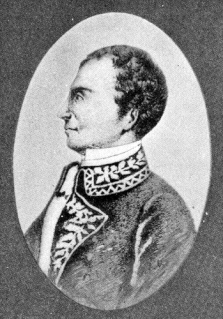 W
WBenoit Joseph André Rigaud was the leading mulatto military leader during the Haitian Revolution. Among his protégés were Alexandre Pétion and Jean-Pierre Boyer, both future presidents of Haïti.
 W
WCharles Rivière-Hérard also known as Charles Hérard aîné was an officer in the Haitian Army under Alexandre Pétion during his struggles against Henri Christophe. He was declared President of Haiti on 4 April 1843. He was forced from office by revolutionaries on 3 May 1844.
 W
WDonatien-Marie-Joseph de Vimeur, vicomte de Rochambeau was a French soldier, the son of Jean-Baptiste Donatien de Vimeur, comte de Rochambeau.
 W
WPhilippe François Rouxel, viscount de Blanchelande was a French general. He was serving as Governor of Saint-Domingue at the start of the Haitian Revolution.
 W
WAdmiral Sir Bartholomew Samuel Rowley was a British naval officer who served during the American, French Revolutionary and Napoleonic Wars.
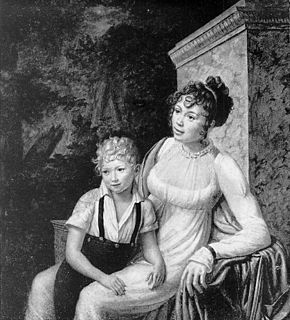 W
WLeonora Sansay was an American novelist. She was the author of Secret History; or, The Horrors of St. Domingo, in a Series of Letters Written by a Lady at Cape Francois to Col. Burr, late Vice-President of the United States, Principally During the Command of General Rochambeau and Laura, and possibly three other novels: Zelica: The Creole ; The Scarlet Handkerchief ; and The Stranger in Mexico.
 W
WLéger-Félicité Sonthonax was a French abolitionist and Jacobin before joining the Girondist party, which emerged in 1791. During the French Revolution, he controlled 7,000 French troops in Saint-Domingue during part of the Haitian Revolution. His official title was Civil Commissioner. From September 1792 to December 1795, he was the de facto ruler of Saint-Domingue's non-slave populace. Within a year of his appointment, his powers were considerably expanded by the Committee of Public Safety. He was recalled in 1795 largely due to the resurgence of conservative politics in France. Sonthonax believed that Saint-Domingue's whites were royalists or separatists, so he attacked the military power of the white settlers and by doing so alienated the colonial settlers from their government. Many gens de couleur asserted that they could form the military backbone of Saint-Domingue if they were given rights, but Sonthonax rejected this view as outdated in the wake of the August 1791 slave uprising. He believed that Saint-Domingue would need ex-slave soldiers among the ranks of the colonial army if it was to survive. On August 1793, he proclaimed freedom for all slaves in the north province. His critics allege that he was forced into ending slavery in order to maintain his own power.
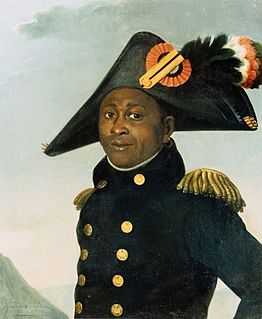 W
WFrançois-Dominique Toussaint Louverture was a Haitian general and the most prominent leader of the Haitian Revolution. During his life, Louverture first fought against the French, then for them, and then finally against France again for the cause of Haitian independence. As a revolutionary leader, Louverture's military and political acumen helped transform the fledgling slave rebellion into a revolutionary movement. Louverture is now known as the "Father of Haiti".
 W
WDominique You or Youx was a privateer, soldier, and politician.